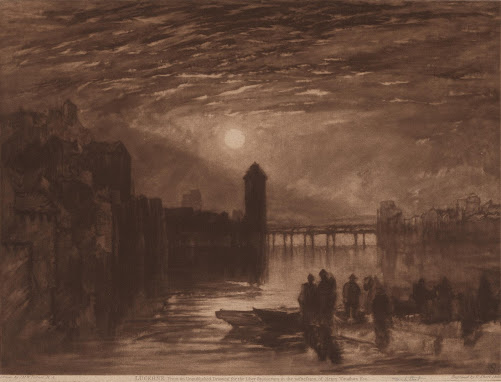Salvatore
Castiglione
(1620–1676)—brother of Giovanni Benedetto Castiglione (aka Il Grechetto)
(1609–1664)
“The Raising of
Lazarus” (TIB title) (aka “La Résurrection du Lazare”; “Opwekking van Lazarus”;
“Resurrection of Lazarus”), 1645
Etching on laid
paper with wide margins, backed with a support sheet.
Size: (sheet) 19.1
x 28.8cm; (plate) 11.5 x 21.6cm; (image borderline) 11 x 21.1cm
Inscribed in
plate: (lower left corner) “Salvatore Cast Genov 1645”.
TIB 46.1 (Paolo
Bellini [ed.] 1982, “The Illustrated Bartsch: Italian Masters of the
Seventeenth Century”, vol. 46, New York, Abaris Books, p. 68, cat. no 1 [43]); Bartsch
1 (XXI.43.1) (Adam Bartsch, “Le Peintre Graveur”, Vienna).
The British
Museum and the Rijksmuseum offer descriptions of this print: https://www.britishmuseum.org/collection/object/P_1982-U-4171
(BM inv. no. 1982,U.4171); https://id.rijksmuseum.nl/200169558.
Condition: a
well-printed impression with wide margins laid onto a support of archival
(millennium quality) washi paper. Beyond minor marks and faint light burn from
previous mounting, the sheet is in a very good condition for its considerable age
with no tears, holes, folds or significant stains.
I am selling
this rare and marvellous etching portraying with great clarity the Biblical
episode in which Christ, shown here in a blaze of heavenly light, brings back
to life the previously deceased body of Lazarus, seen in the foreground emerging
from the tomb with his shroud stretched out to the left, for AU$571 (currently
US$371.96/ EUR351.54/ GBP292.02 at the time of this listing) including Express
Mail (EMS) postage and handling to anywhere in the world, but not (of course)
any import duties/taxes imposed by some countries. Note that payment is in
Australian dollars (AU$571) as this is my currency.
If you are
interested in purchasing this bold composition of great breadth, possibly
designed by the artist’s famous brother, Giovanni
Benedetto Castiglione (as proposed by the Curator of the British Museum
[see BM inv. no. W,6.29]), please contact me (oz_jim@printsandprinciples.com)
and I will send you a PayPal invoice to make the payment easy.
Notwithstanding
the catalogue entries that this etching is the “only known print by the artist” (see https://www.britishmuseum.org/collection/object/P_W-6-29),
recent research has reattributed another very beautiful print that was once
considered to be by the hand of Giovanni Benedetto Castiglione to Salvatore
Castiglione (see https://www.rijksmuseum.nl/nl/collectie/object/Hoofd-van-een-oude-man-met-baard--0ea11280d87683ce9c09256c944c1c91?tab=data)
and this reattributed print is (surprisingly) currently still available in an
earlier listing: https://www.printsandprinciples.com/2021/01/salvatore-castigliones-etching-head-of.html.
This print has been sold






















































